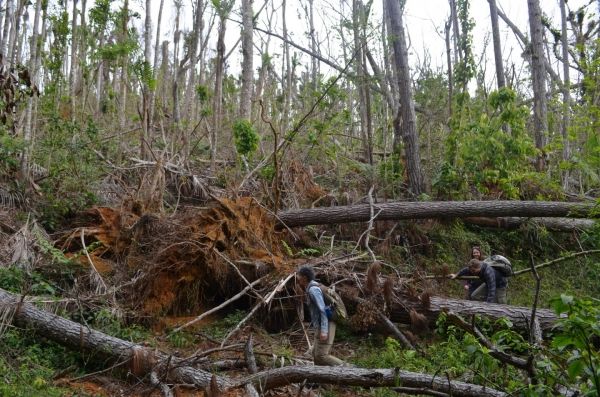A new study says that hurricanes Irma and Maria combined in 2017 to knock down a quarter of the biomass contained in Puerto Rico’s trees — and that massive rainfall, more than wind, was a previously unsuspected key factor. The surprising finding suggests that future hurricanes stoked by warming climate may be even more destructive to forests than scientists have already projected. The study appears this week in the journal Scientific Reports.
“Up to now, the focus on damage to forests has been on catastrophic wind speeds. Here, the data show that rain tends to be the greatest risk factor,” said Jazlynn Hall, a Columbia University PhD. student who led the study. Her team identified several ways in which extreme rain might topple trees, but they do not completely understand the phenomenon yet, she said. She said that adding in climate-driven extreme rainfall to the various dangers threatening tropical and subtropical forests suggests that they may store less carbon in the future than previously thought.
When Irma arrived off Puerto Rico on Sept. 6, 2017, it was then the most powerful Atlantic hurricane ever recorded. (Dorian, two years later, surpassed it.) But the main storm passed well off the coast; it dumped a foot of rain, but spared the island the heaviest winds. Forests suffered little damage. Then, two weeks later, on Sept, 20, Maria hit directly, with sustained winds of up to 130 miles per hour, and an astonishing 5 feet of rain over 48 hours in some areas.
Read more at Earth Institute at Columbia University
Image: Researchers survey damage to a forest plot following hurricanes Irma and Maria. Uprooting of trees in many cases may have had more to do more with rain than wind. (Credit: Kevin Krajick/Earth Institute)


